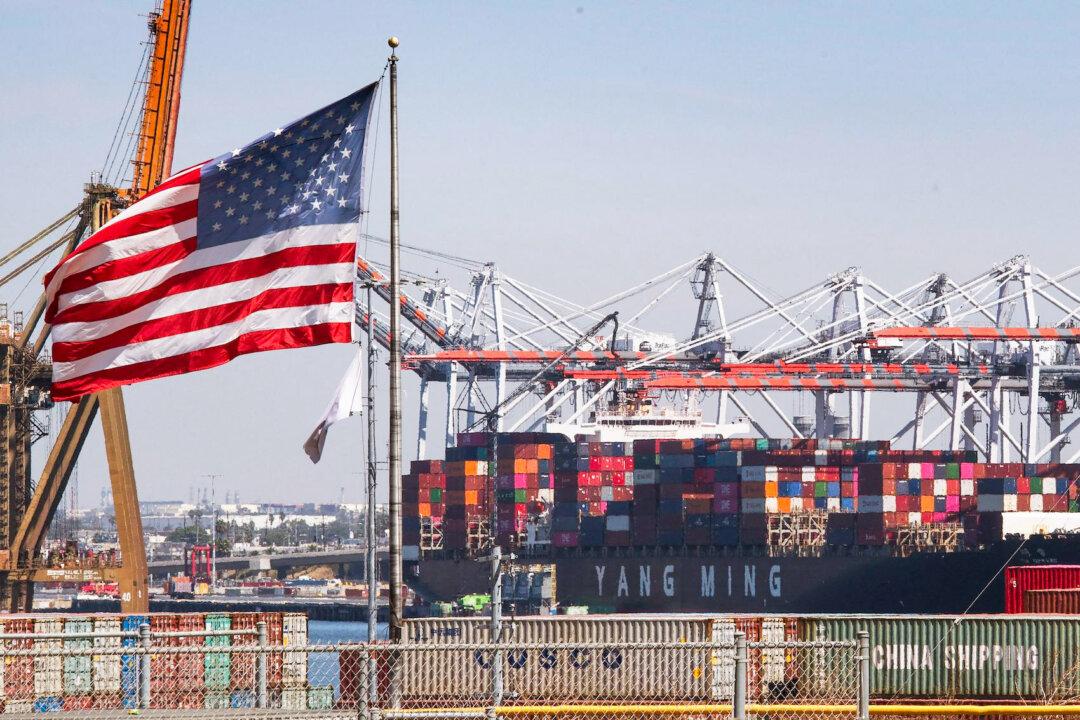News Analysis
If China “dumped” all of its U.S. debt and U.S. Treasury bills in a single day, it would lose a lot of money, decrease its ability to purchase raw materials, and benefit the U.S. Fed that would buy up the Treasury bills at a discount.
There are five international currencies that central banks around the world commonly hold in reserves: the U.S. dollar, euro, Chinese yuan, Japanese yen, and the UK pound. China’s foreign currency reserves, the world’s largest, now stand at $3.218 trillion. This number is divided among the international currencies, with the dollar being the largest percentage.
The total U.S. debt held by China is $1.095 trillion, which represents about 4 percent of the U.S. national debt of $28 trillion. Over the past 20 years, either Japan or China has held the most U.S. debt. Currently, Japan holds slightly more than China.
According to the Fed and U.S. Department of the Treasury, $7.03 trillion of U.S. dollars are held in the reserves of foreign countries. The U.S. dollar represents 59.2 percent of global foreign currency reserves, while the yuan is only 2.5 percent. Countries hold U.S. debt and U.S. dollars, as a store of wealth, to back their own currency, and to use for purchases of imports and raw materials.
Global commodities—such as steel, cobalt, magnesium, and even petrol—are priced in U.S. dollars. Purchases of these raw materials and other global trading are largely settled with hard currency, which generally means dollars. The second-largest currency reserves are in euro. But dollars are much more useful. They are considered safe and stable, and are accepted everywhere. The euro tends to be used mostly for investment in the European Union, but not in North or South America, or most of Asia, and only in some parts of Africa.
The usefulness of the U.S. dollar makes it the most popular paired currency, meaning that most other currencies are traded into and out of U.S. dollars. The dollar accounts for about 88 percent of all foreign exchange trading. About $5 trillion worth of currency is traded each day, on foreign currency exchanges.
Countries diversify their foreign reserves according to the amount of each currency they will need for trade settlement. Consequently, central banks hold a small quantity of yuan. Most global trading is settled in dollars, while only about 1.7 percent is settled in yuan.
Hu Xijin, the editor-in-chief of state-run media Global Times, said that experts in China have discussed disposing all of the country’s U.S. dollar holdings in one go. Some media have dubbed this move “China’s nuclear currency option”—meaning that China could liquidate its U.S. holdings in a single day, crashing the U.S. dollar, and damaging the U.S. economy. This option is actually a non-option, however, as it would not work. Additionally, it would hurt China and benefit the United States.
China needs to keep large sums of U.S. dollars to pay its own debts, which are denoted in U.S. dollars. A large reserve of dollars is also a hedge against a future financial disruption, such as a potential default by the Evergrande property developer, whose debt is equal to 2 percent of the country’s GDP. Another reason why China needs to hold U.S. dollars and hard currency reserves is to back the yuan.
In the 19th century, countries backed their currencies with gold. After World War II, only the United States had enough gold to support its currency. So the Bretton Woods system was established, whereby other countries backed their currency with U.S. dollars. This system continues until today, even though the U.S. dollar has not been backed by gold, since 1971.

Paramilitary policemen patrol in front of the People’s Bank of China in Beijing on July 8, 2015. Greg Baker/AFP/Getty Images
China’s central bank, People’s Bank of China (PBOC), uses U.S. dollars to buy up yuan, when the price of yuan drops beyond a certain level. If the PBOC liquidated its dollar holdings, it would have no way of defending the yuan.
When China buys U.S. debt, it increases the amount of yuan in circulation, which brings down the price of the yuan, making China’s exports cheaper. By selling its U.S. dollar debt, China would decrease the amount of yuan in circulation—this would drive up the price of the yuan, making China’s exports more expensive.
Former President Donald Trump called China a currency manipulator. This means that the Chinese Communist Party (CCP) artificially controlled the price of the yuan, in order to increase China’s exports. Selling off China’s dollars would have the opposite effect.
In short, there is no threat that the CCP could crash the dollar by “dumping” the $1 trillion of U.S. government debt that China holds. In 2014, China sold off roughly $1 trillion of U.S. debt, but it had no significant impact on the U.S. economy.
If Beijing liquidated all of its U.S. debt at once, the selling price of China’s U.S. Treasury bills would drop. China would lose money. And the Fed would buy back its own debt at a discount. This is exactly what the United States did in response to the 2008 global financial crisis. As other countries liquidated U.S. debt securities to fund their stimulus packages, the Fed went on the open market and bought them at a discount. Since June 2020, the Fed has been buying $80 billion of Treasury securities per month. It would be very happy to buy these at 80 or 90 cents on the dollar, if China suddenly flooded the market, driving down the price.
Views expressed in this article are opinions of the author and do not necessarily reflect the views of The Epoch Times.





